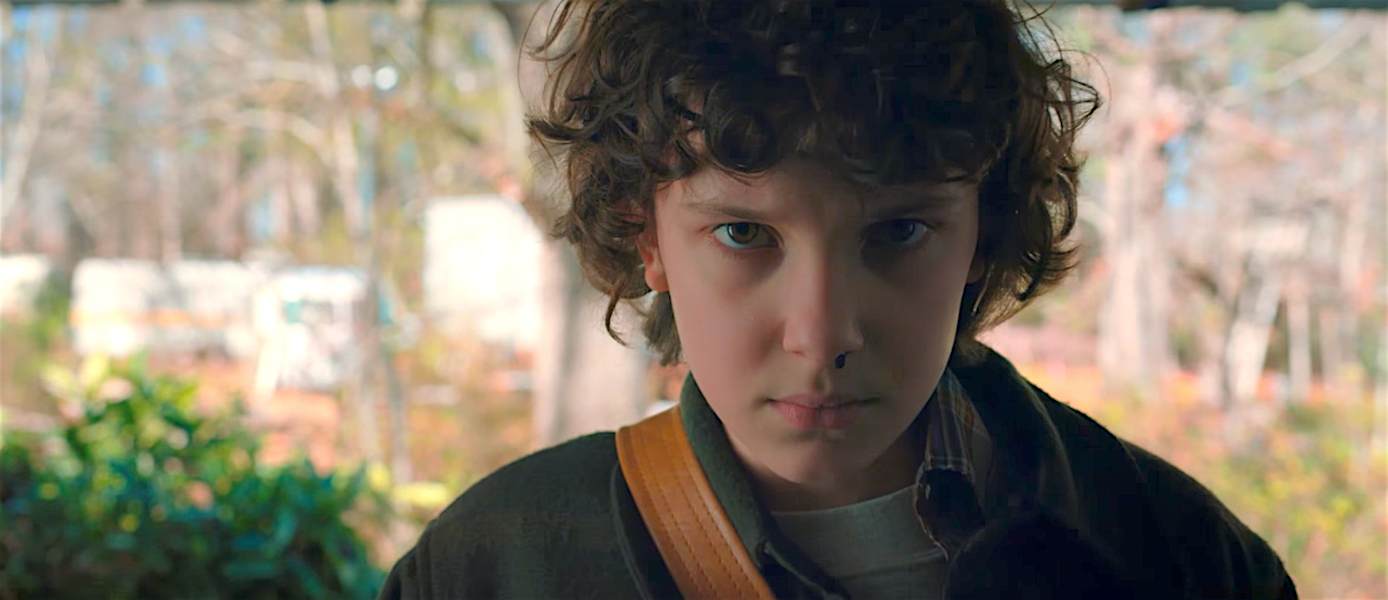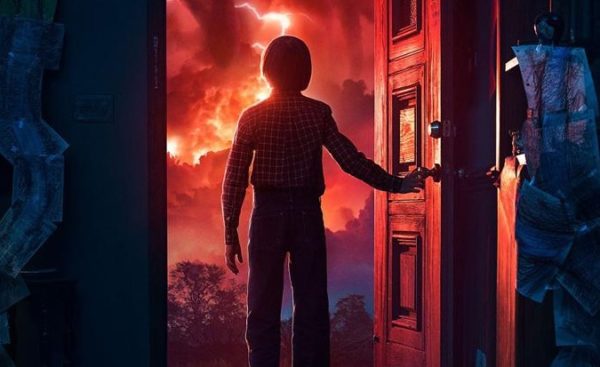In 2016 Netflix viewers partied like it was 1983 with
the release of the hit series Stranger
Things. Inspired by the pop-culture of the 1980s’, Stranger Things proved itself to be more than a mere homage to
cultural icons past by becoming one of the most hotly discussed and debated series
of the new millennium. Following the first season’s success fans and critics
alike wondered if a second season would, or even could, reach the standards of
excellence set by the series’ debut. As 2017 approaches its end the question
remains; was 1984 in Hawkins, Indiana as chilling, thrilling, and downright
strange as we had hoped?
| Who you gonna call? |
The story begins roughly one year after the events of
the first season as the residents of Hawkins attempt to return to some
semblance of normality. For the series’ central players the emotional scars
that they sustained in season one remain painfully raw one year later. Just as
the characters come to terms with their traumas, however, events begin
occurring across Hawkins which suggest that the government experiments in
Hawkins’ Lab were just the beginning of the strange things to come.
This season largely manages to avoid the pitfalls
typical of most sequels by continuing to build upon the events of season one,
rather than placing the characters into a whole new adventure. The most obvious
example is the use of the overarching theme of trauma to highlight the ways in
which the characters cope with the losses that they suffered in season one.
This exploration of trauma allows viewers crucial insight into the characters, while
grounding the often fantastic plot through the inclusion of an all too real
issue. This theme also offers ample opportunity for the script to address the
questions raised in season one such as how will his time in the Upside Down
affect Will and what were the consequences of Barb’s death. The series also
provides viewers with much needed insight into the inner workings of the
mysterious Hawkins Lab and Upside Down in a way that enrichens the story while
still leaving room for future surprises.
Despite the script’s efforts to remain true to the spirit
of first season, the second season contains enough twists of its own to keep
viewers coming back for more. Most notably, the inclusion of the newest Upside
Down villain the Shadow Monster/Mindflayer infuses the plot with psychological
thrills that will have viewers keeping the lights on long after the final
credits fade. Perhaps the most satisfying changes are those that the central
characters undergo as they grow and evolve in response to a set of all new
challenges. In spite of this season’s many praiseworthy aspects, however, season
two did contain flaws which were largely the result of the writers’ efforts to
expand the story’s universe too much too quickly. The script’s stumbles are
most glaring in the scenes featuring new kids in town Billy and Maxine, who
could have been compelling characters had they been given back stories that were
more developed and more directly connected to the central plot. Similarly,
Eleven’s adventures beyond Hawkins proved a distraction rather than a story
thread, with her encounter with fellow lab experiment Kali/Eight significantly
slowing the season’s momentum. Overall, however this second visit to Hawkins,
Indiana was a worthwhile trip that already has this reviewer anticipating what
thrills season three will have in store.
 |
| In a world full of tens be an Eleven |
While Stranger
Things contains a plot that is truly out of this world, its greatest draw
remains the humanity at the heart of the performances of its ensemble cast’s
performances. Wynona Ryder continues to shine in her complex portrayal of Will’s
struggling mom, Joyce. David Harbour adds an essential vulnerability to his
role as cynical sheriff Jim Hopper, particularly in his scenes opposite Millie
Bobby Brown. Natalia Dyer infuses Nancy with an empowering spunk and resilience
as she evolves from teenage follower to confident young woman. Charlie Heaton
enlivens social outcast Jonathan with a boyish charm, especially in his scenes
opposite Dyer, which crackle with chemistry. Joe Keery proved to be this season’s
breakout star as season one’s stereotypical jock turned season two hero Steve
Harrington. Gaten Matarrazzo rightfully earned plenty of buzz in his reprised
role as the always endearing Dustin, with his scenes opposite Keery lending the
season some of its most memorable moments. Caleb McLaughlin turned in another
winning performance as Lucas, while adding a new dimension to his role as Lucas
struggles with changing group dynamics and girls. Noah Schnapp finally gets the
chance to show off his acting skills as Will evolves from plot device to
compelling and tormented protagonist. Finn Wolfhard adds an edge to his role as
Mike through his portrayal of Mike’s grief following the disappearance of
Eleven. Millie Bobby Brown electrifies the screen once again as the enigmatic
Eleven as she aptly portrays Eleven’s full range of conflicting emotions.
Series newcomer Brett Gelman is endlessly entertaining in his performance as an
eccentric freelance journalist. Sean Astin proves to be the series’ best
addition in his role as underdog turned surprising hero Bob Newby.
Science fiction, supernatural thriller, coming of age
tale, and homage to all things 1980’s; whatever its classification Stranger Things has become nothing short
of a cultural phenomenon. Through its innovative scripts and heartfelt
performances, the series continues to push the boundaries of television. Both a
horror story with a heart and a period piece with lessons for today, Stranger Things is strange in all the
best ways.
 |
| I don't think we're in Hawkins anymore, Toto |

No comments:
Post a Comment